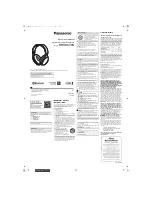
RangeMax Wireless-N 150 Router WPN824N User Manual
Fine-Tuning Your Network
5-16
v1.0, February 2010
If you suspect an MTU problem, a common solution is to change the MTU size to 1400. If you are
willing to experiment, you can gradually reduce the MTU size from the maximum value of 1500
until the problem goes away.
Table 5-1
describes common MTU sizes and applications.
To change the MTU size:
1.
In the main menu, under Advanced, select
WAN Setup
.
2.
In the
MTU Size
field, enter a new size between 64 and 1500.
3.
Click
Apply
to save the new configuration.
Overview of Home and Small Office Networking
Technologies
Common connection types and their speed and security considerations are:
•
Broadband Internet
.
Your Internet connection speed is determined by your modem type,
such as ADSL or cable modem, as well as the connection speed of the sites to which you
connect, and general Internet traffic. ADSL and cable modem connections are asymmetrical,
meaning they have a lower data rate
to
the Internet (upstream) than
from
the Internet
(downstream). Keep in mind that when you connect to another site that also has an
asymmetrical connection, the data rate between your sites is limited by each side’s upstream
data rate. A typical residential ADSL or cable modem connection provides a downstream
throughput of about 1 to 3 megabits per second (Mbps). Newer technologies such as ADSL2+
and Fiber to the Home (FTTH) will increase the connection speed to tens of Mbps.
Table 5-1. Common MTU Sizes
MTU
Application
1500
The largest Ethernet packet size and the default value. This is the typical setting for non-
PPPoE, non-VPN connections, and is the default value for NETGEAR routers, adapters,
and switches.
1492
Used in PPPoE environments.
1472
Maximum size to use for pinging. (Larger packets are fragmented.)
1468
Used in some DHCP environments.
1460
Usable by AOL if you do not have large e-mail attachments, for example.
1436
Used in PPTP environments or with VPN.
1400
Maximum size for AOL DSL.
576
Typical value to connect to dial-up ISPs.
















































